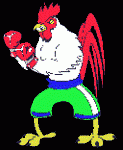Snoredog wrote:
Split:
How much of that collapse can be attributed to natural relaxation of muscles at the end of inhale and/or exhale?
Meaning it takes diaphragm and muscle effort to inhale and relaxation of the same for exhale. Is that relaxation part of what allows the obstruction to occur?
I think this plays a pivotal role for the on-coming apnea. In a lot of cases, there is a fall in muscle activity just prior to an apnea. Take this snapshot for example.

You can clearly see prior to obstruction, that the tongue (genioglossus) is cranking away during inspiration to oppose the negative pressure generated by the diaphragm. There is also some residual activity during expiration (tonic) which helps "stiffen" the airway during this respiratory phase.
However, the inspiratory phasic activity begins to dissipate leading into to the obstruction and pretty much disappears at the onset of the apnea. During the apnea, there is still a lack in phasic tongue muscle activity. As the apnea continues, there is an increase in drive (shown by more -ve negative esophageal pressure), but this isn't enough to augment inspiratory tongue muscle activity. An arousal eventuates, leading to a burst in tongue muscle activity and ventilation.
While in this example, there seems to be a maintenance of tonic tongue muscle activity. However, in a lot of cases, this also decreases as well. I think that this is really important and is likely to contribute to this expiratory collapse of the airway. For instance, if there is a fall in tonic activity, the airway will now be much "floppier" towards the end of expiration. It has been shown in rabbits that pressure in the tissues surrounding the airway, is highest at end expiration. This increased tissue pressure, in addition to the fall in tonic activity, will likely cause the airway to passively collapse towards the end of expiration. This is probably why neck cicumference/neck fat correlates with OSA.
The genioglossus is the most studied of the airway dilator muscles. No-one can argue that the activity of this muscle highly dictates the patency of the upper airway. The fall in phasic and tonic activity is very likely involved in airway collapse. But we believe there is more to it. We believe that we shouldn't be confined to the upper airway. This decrease in muscle activity is likely to be global in nature. Diaphragm activity, both tonic and phasic also decreases. This decrease in activity would likely lead to diaphragm ascent, which perhaps has important implications on amount of stretch on the airway (abdominal compression study ).
Diaphragm ascent would also result in a fall in lung volume. Reduced lung volume makes the airway even floppier. In the picture above, there is some expiratiory volume. This would result in a further decrease in lung volume, making the airway more collapsible. Basically, the patient is "stuffed" because he is losing lung volume and the tongue muscle is basically switched off. The arousal fixes the airway but arousal may actually perpetuate apneas (discussed below).
I have some more data re lung volume. I won't hijack this thread with this data. I will add it to another thread I started a while back. It has some interesting data re lung volume changes at sleep onset. Stay tuned!
Snoredog wrote: Can that same relaxation be what causes us to shallow breathe to the point of a central?
Maybe. I have heard a number of people on this forum say that they feel as though they stop breathing at sleep onset. Sleep onset is accompanied by a fall in a "wakefulness" stimulus. This results in the fall in ventilation at sleep onset and also the fall in muscle activity.
What the hey, I'll discuss the the effect of an arousal. So our group is trying to decide whether an arousal is
good or
bad. Obviously arousals are good because they act as a protective mechanism. An arousal occurs prior to the offset of a large % of sleep disordered breathing events. However, arousals can also be bad. I'll write the next few things in a list:
1) Due to the apnea, CO2 levels are high, thus resulting in hyperventilation to "blow off" the excess CO2.
2) However, the body tends to over compensate and actually blows off more CO2 than what is needed.
3) At the same time, the individual falls asleep and actually hypopventilates (central apnea).
4) As CO2 are still low, upper airway muscles are also switched off.
5) Eventually, CO2 levels rise and ventilation begins. However, the airway muscles might still be switched off, leading to an apnea. The even would be scored as a mixed apnea though.
6) An arousal again then occurs, followed by hyperventilation and the cycle begins again
So, in this instance, arousals may actually contribute to the cyclical nature of sleep disordered breathing events.
_________________
CPAPopedia Keywords Contained In This Post (Click For Definition):
Arousal
_________________
CPAPopedia Keywords Contained In This Post (Click For Definition):
Arousal
_________________
CPAPopedia Keywords Contained In This Post (Click For Definition):
Arousal
_________________
CPAPopedia Keywords Contained In This Post (Click For Definition):
Arousal














